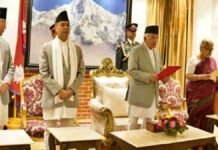
Lucknow: In a significant development in the Gyanvapi Mosque dispute, Varanasi’s District Court denied a petition from Hindu parties seeking further excavation and an Archaeological Survey of India (ASI) assessment of the mosque complex. This decision, issued Friday, closes a chapter in the decades-old case initiated by Somnath Vyas in 1991, bringing an impactful legal moment for both the Hindu and Muslim communities invested in the outcome.
Claim of a 100-Foot Shivling Under Gyanvapi Dome Stirs Calls for Excavation
The Hindu plaintiffs allege that beneath the mosque’s main dome lies a 100-foot Shivling a sacred symbol of Lord Shiva. Based on this assertion, they requested an ASI survey involving excavation in hopes of uncovering further evidence of the site’s purported Hindu origins. Meanwhile, the Muslim side has firmly opposed any additional excavation, asserting that the mosque has functioned as a place of worship for centuries and remains an important religious site. Gyanvapi Mosque, positioned beside the historic Kashi Vishwanath Temple on the banks of the Ganges, is regarded by Hindus as a reclaimed ancient temple of Lord Shiva, while Muslims uphold it as a mosque.
Legal Milestones in the Gyanvapi Dispute: Timeline of Key Events
The Gyanvapi Mosque dispute entered the national spotlight last year when Delhi resident Rakhi Singh, joined by four other women, filed a petition to worship Shringar Gauri and other deities purportedly present on Gyanvapi’s premises. The petition claimed the deity figures, especially Shringar Gauri, resided on undisputed plot number 9130, within the Gyanvapi Mosque complex. The plea called for a formal survey to clarify the religious identity of the site.
Following this request, a Varanasi court ordered an initial survey and videography of the mosque site, a decision that became a national talking point. The move met with resistance from the mosque’s caretakers, the Masjid Intezamia Committee, who filed an appeal in the Allahabad High Court seeking to halt the survey. However, the High Court upheld the lower court’s order, allowing the survey to proceed.
Discovery in Mosque’s Wazukhana Sparks Controversy
During the court-ordered survey, a structure resembling a Shivling was found in the mosque’s ablution area, or wazukhana, leading to immediate sealing of that section by authorities. The discovery further polarized the issue, as many from the Muslim community view the site as integral to the mosque. The case soon reached the Supreme Court, which permitted continued prayer services in the mosque, restoring a semblance of normalcy while the larger dispute continued in court.

This latest ruling marks a pivotal point in the ongoing legal battle, emphasizing the complexities of India’s rich, intertwined heritage and the challenges in reconciling historic claims with present-day religious practices. With Friday’s decision, the debate over Varanasi’s Gyanvapi Mosque remains a profound symbol of India’s ongoing dialogue between its past and its evolving present.












































